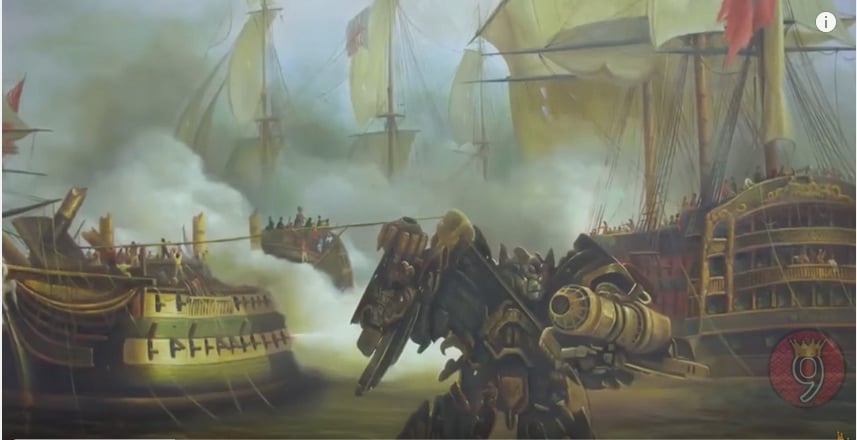People
Watch This Museum Prank Customers by Inserting a Transformer Into an Old Master Painting
Is that a . . . Transformer?

Is that a . . . Transformer?

Eileen Kinsella

We’ll just call it Old Ironhide.
Recently, as part of its effort to promote Transformers: The Last Knight, Paramount Studios surreptitiously placed the character Ironhide at the forefront of a naval battle scene: a “circa 1815” painting, in the Dulwich Picture Gallery in London. Then they set up a hidden camera and filmed the results.
From befuddled adults to confident and enthusiastic children who immediately spot the extremely anachronistic element in the elaborately painted work—Old Master expert and blogger Bendor Grosvenor declared it a “well done” copy—the results are hilarious. The original painting, by Auguste Mayer, was painted in 1836 and is titled Scene of the Battle of Trafalgar, 1805.
Intrigued viewers move close up as you hear them utter remarks like: “What on earth is going on here?”; “Is it a Transformer?”; “It’s a Transformer,”; “It looks like a Transformer.” Some bounce back and forth to the label, especially the supposed date of the picture. Our favorite moment is when an adult immediately schools a fascinated child, telling him that although it does, indeed, look like a Transformer, it’s actually part of a sinking ship.
The undeterred child says “Yes, but it’s still AWESOME.”
The film, which has a $260 million budget (or roughly the price of two Basquiats), is directed by Michael Bay. It stars John Goodman, Laura Haddock, Anthony Hopkins, Stanley Tucci, John Turturro, and Mark Wahlberg, and opens on June 21.
According to the official trailer, the plot revolves around humans at war with the Transformers, and Optimus Prime is gone. “The key to saving the future lies buried in the secrets of the past and the hidden history of Transformers on Earth,” according to the website. “Now, it’s up to the unlikely alliance of Cade Yeager (Wahlberg), Bumblebee, an English lord (Hopkins) and an Oxford professor (Haddock) to save the world.”
Of the lighthearted prank, Grosvenor writes: “Some may recoil at the brazen commercialisation of a venerable UK institution. But I like the idea of surprising visitors, and prompting them to look closer at pictures, and question what they see.”
We have to agree with him on this one.